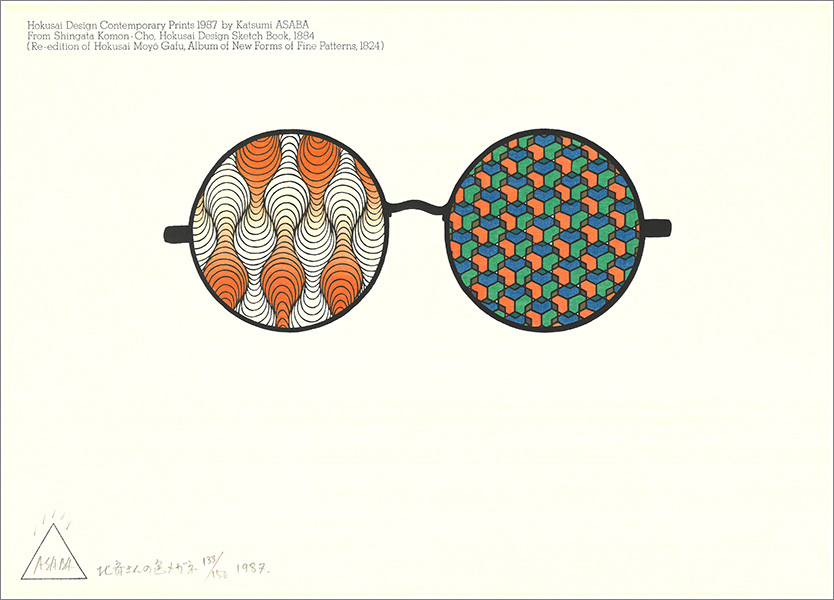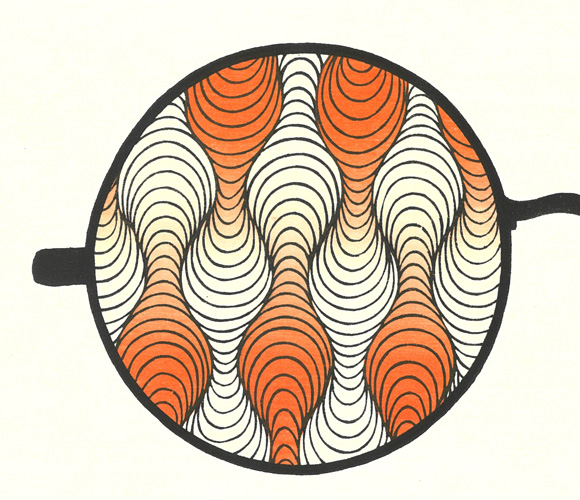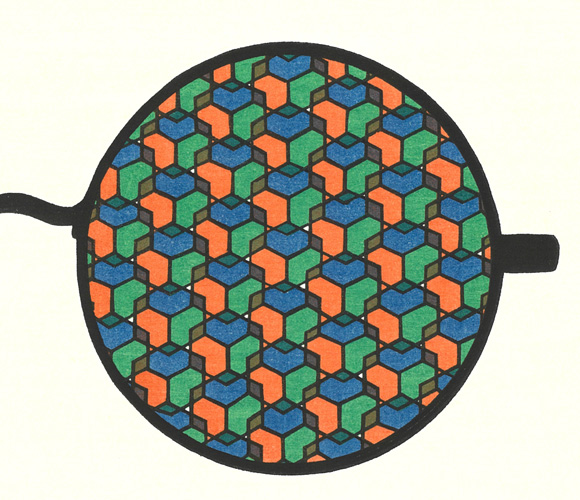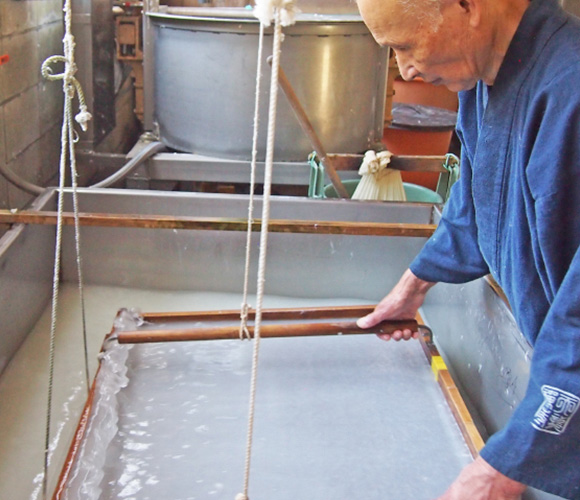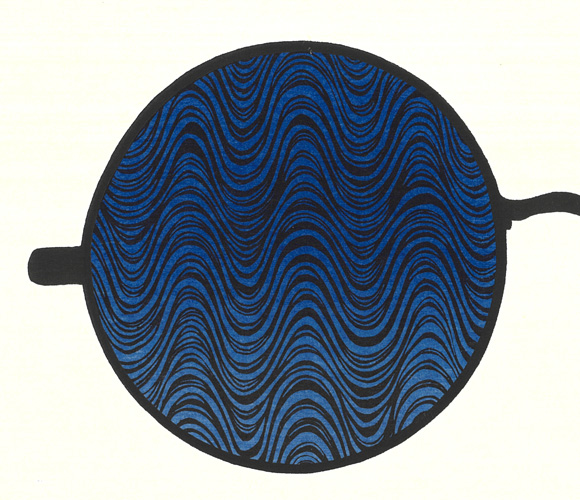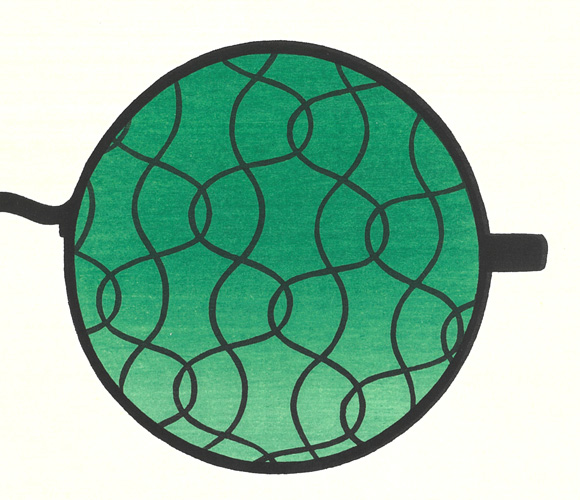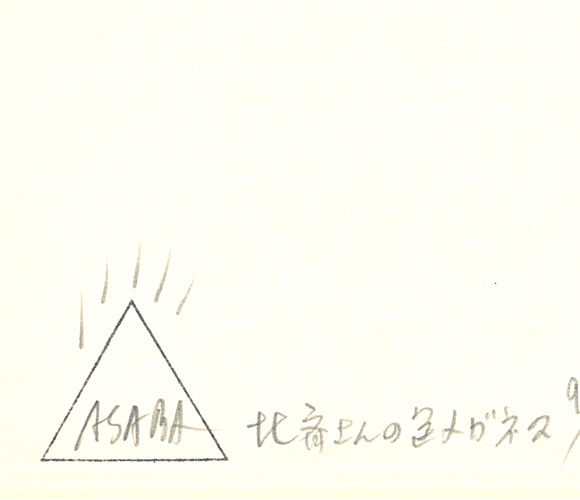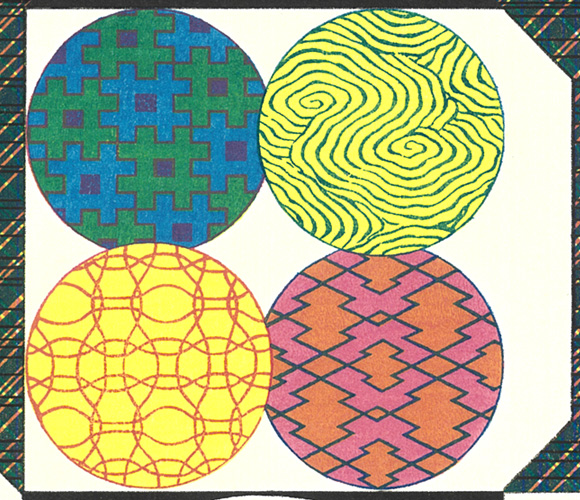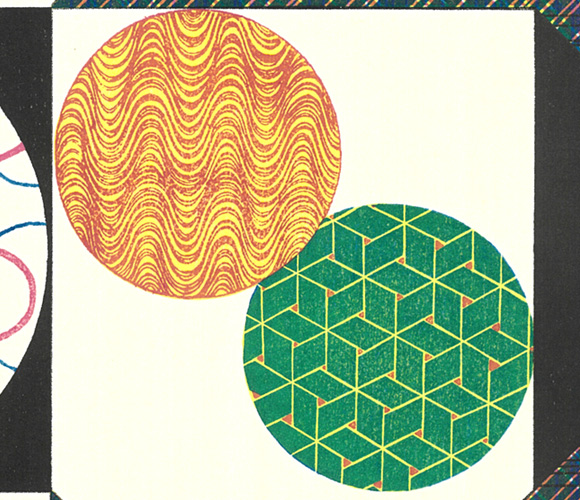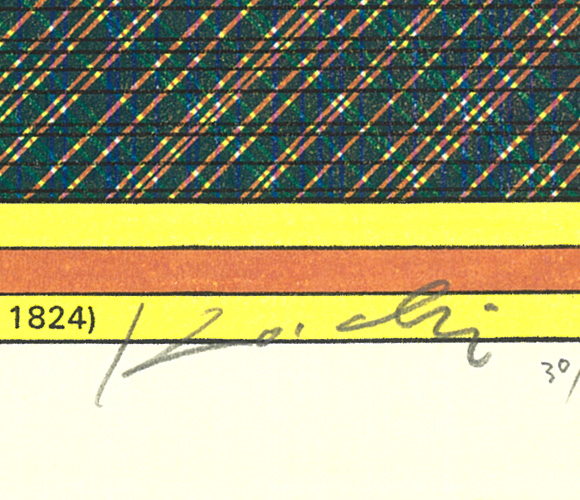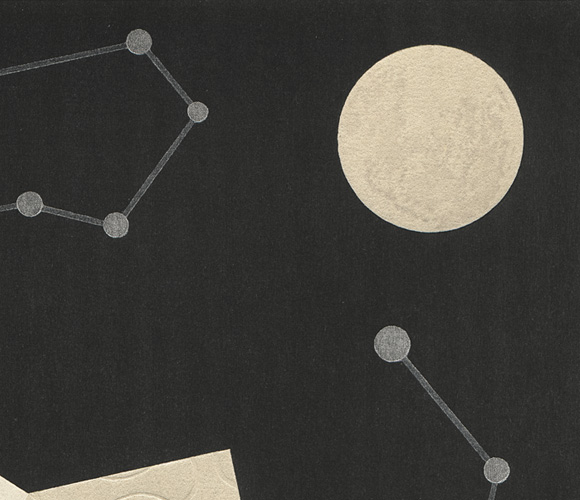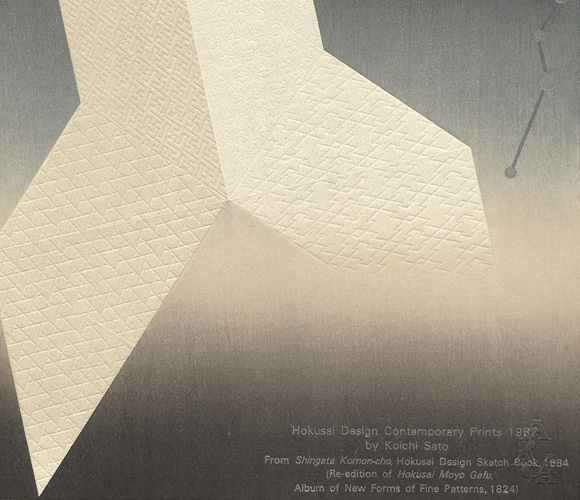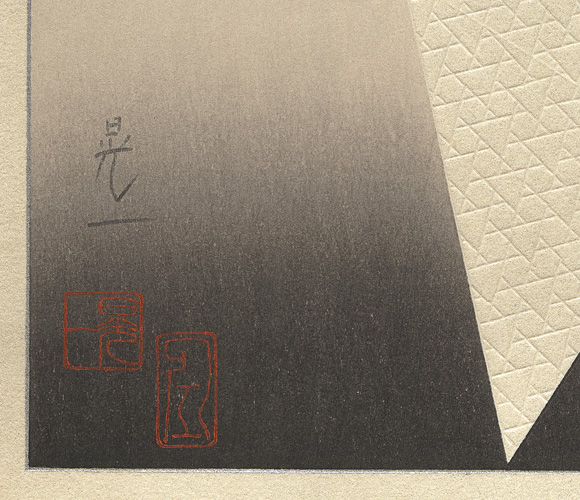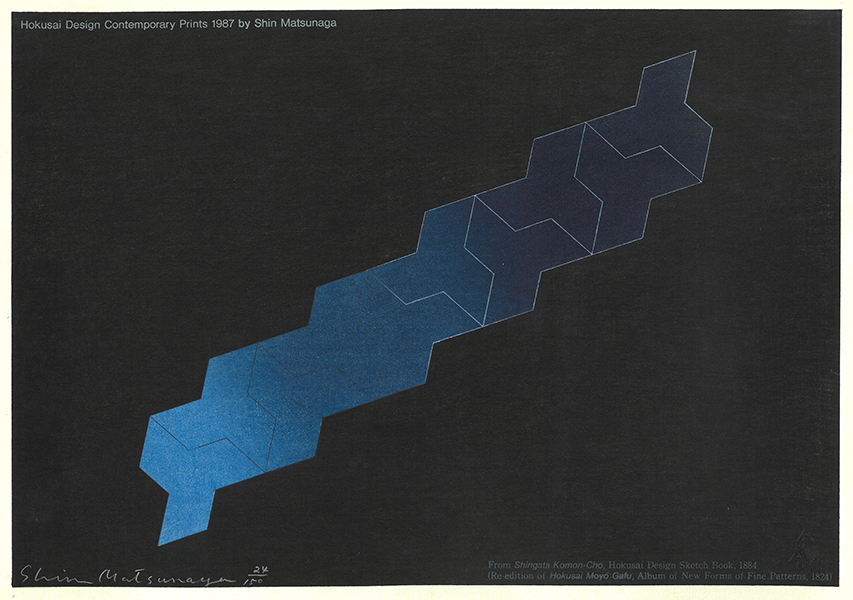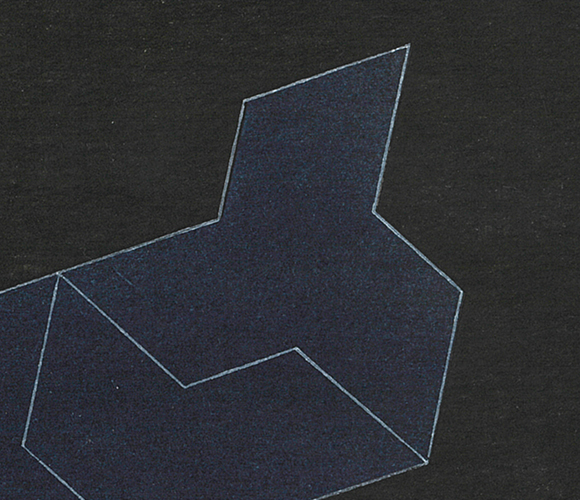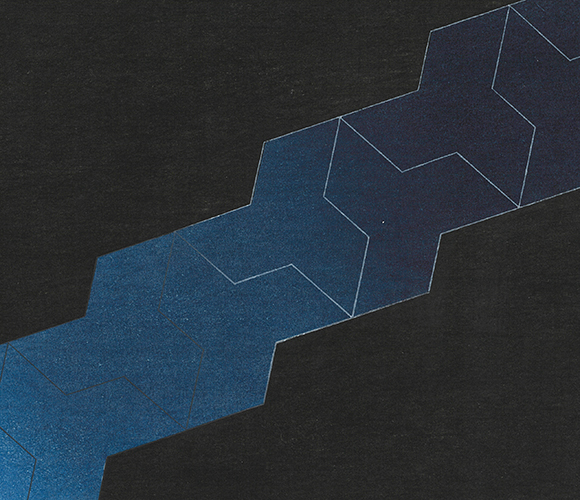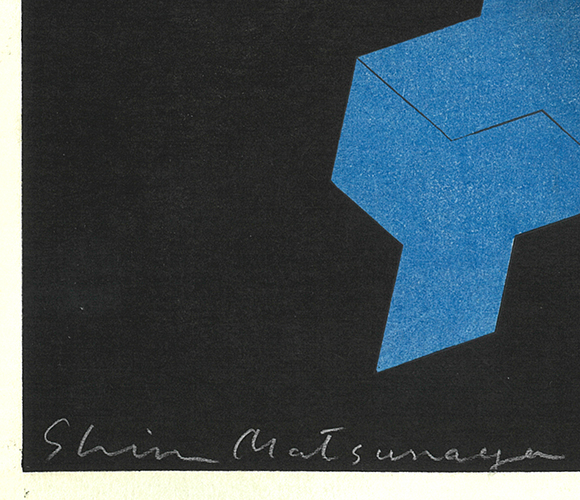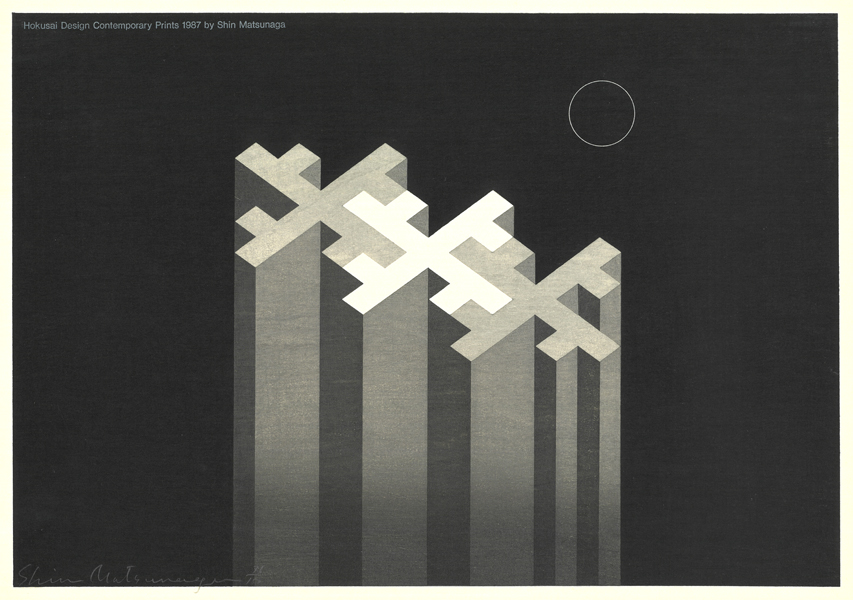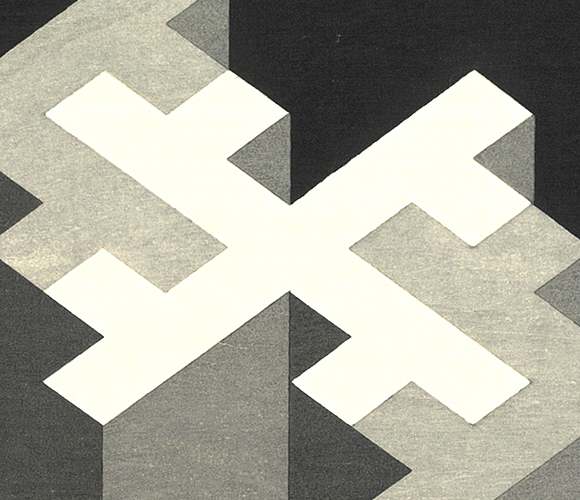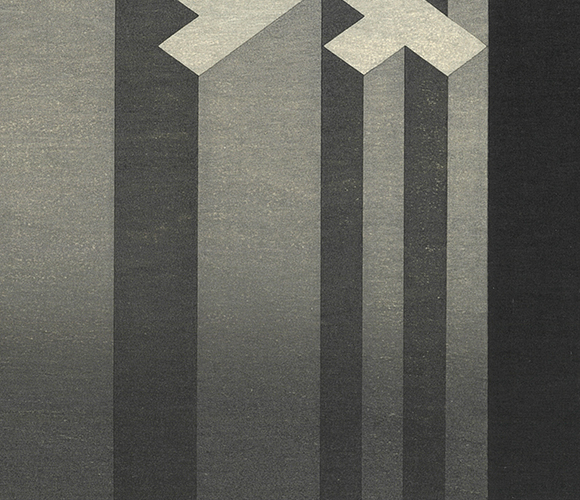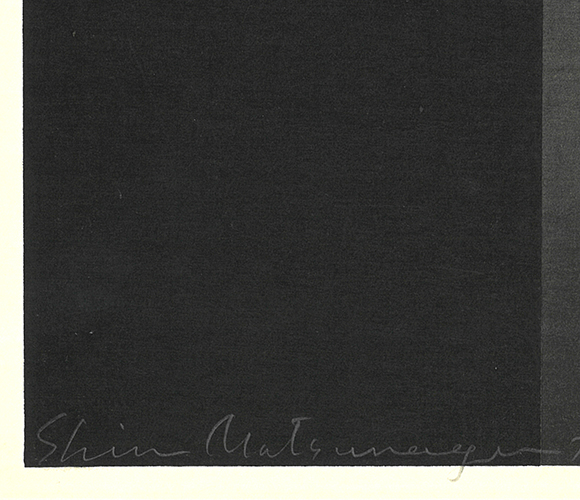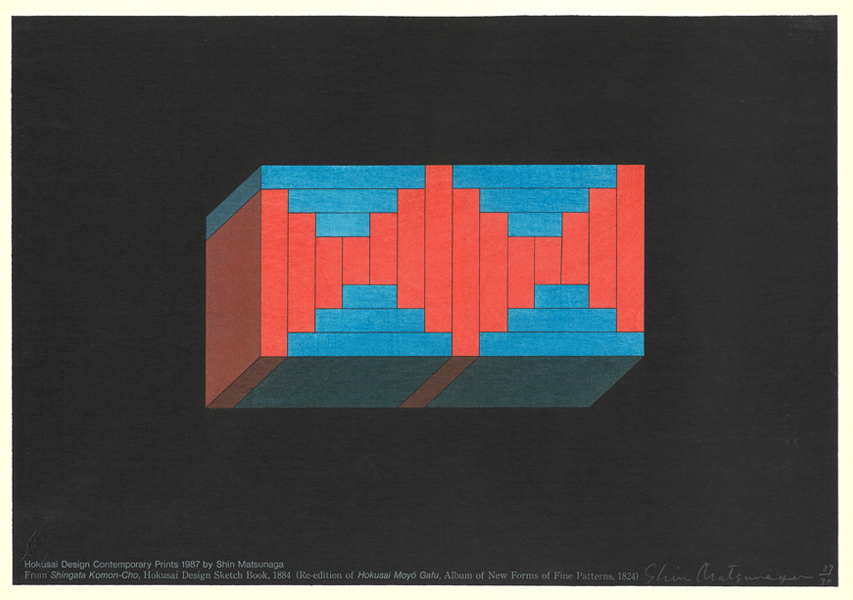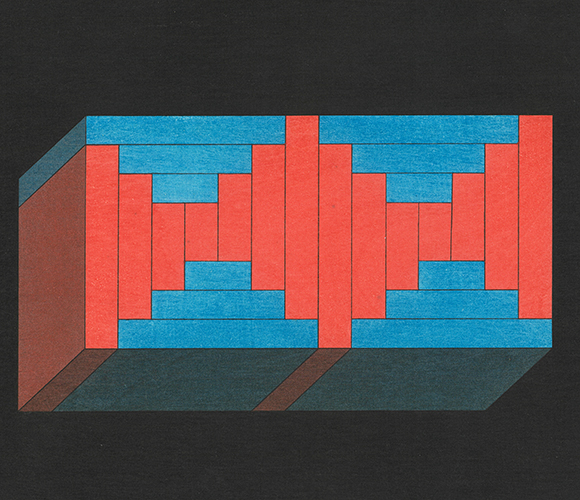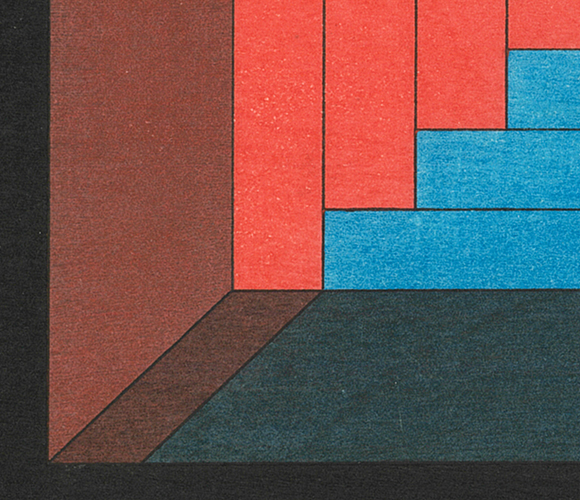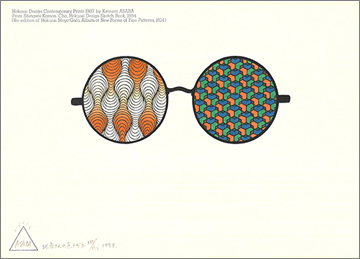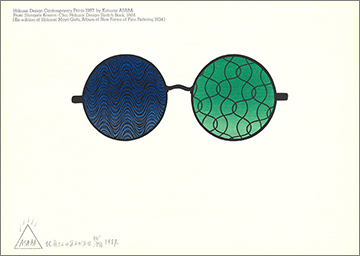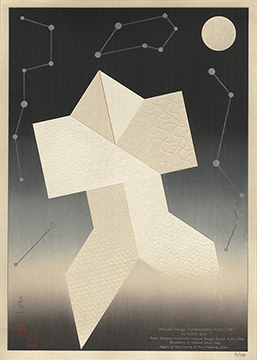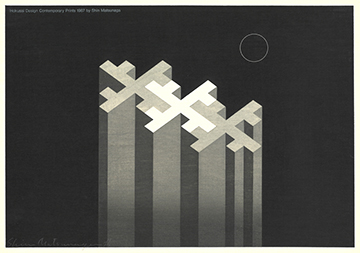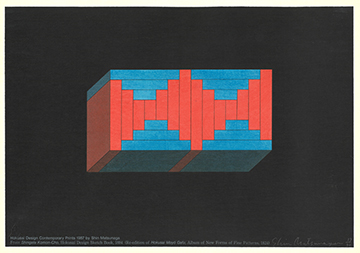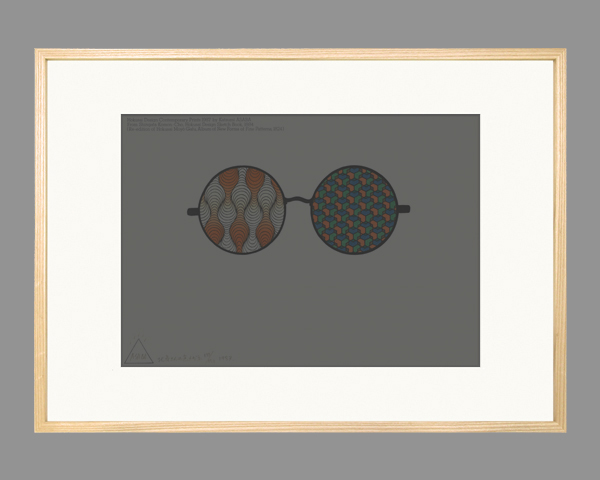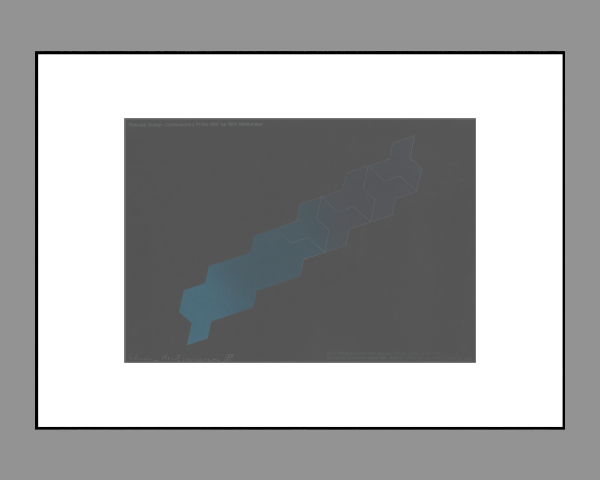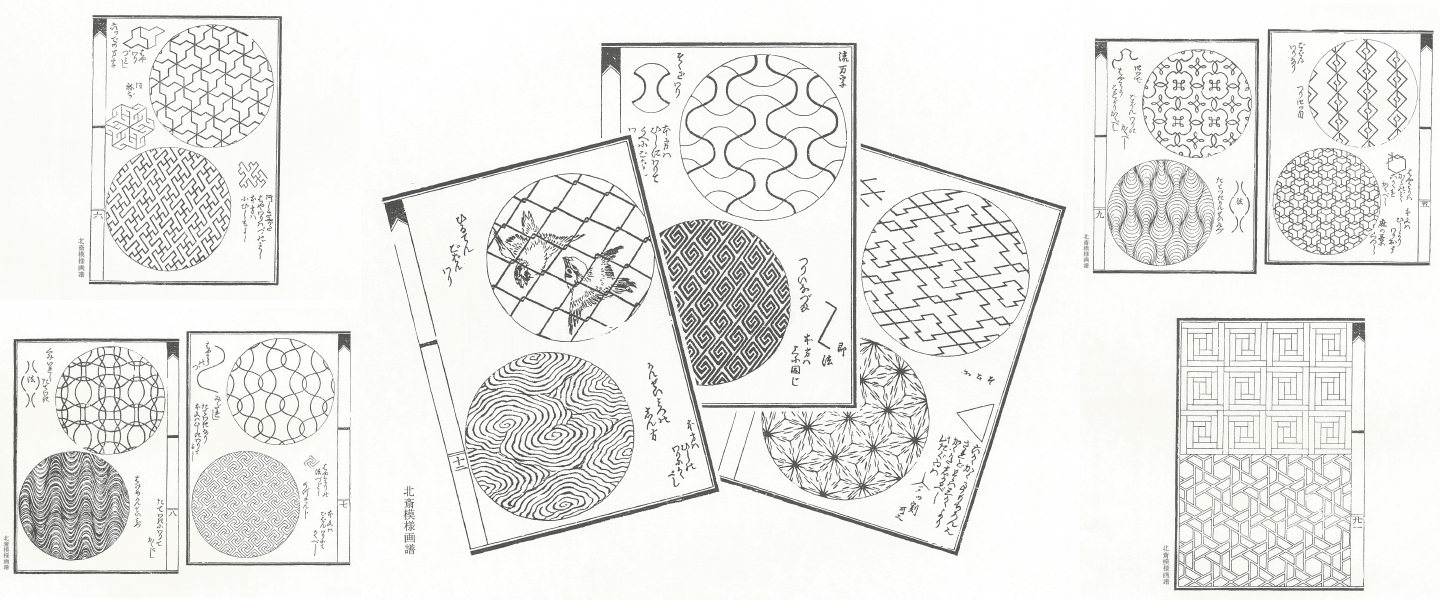
Three leading designers of Japan reinterpret "Hokusai Patterns"
"Hokusai Design Contemporary Prints
from Hokusai Design Sketchbook"
by Katsumi Asaba,
Koichi Sato and Shin Matsunaga
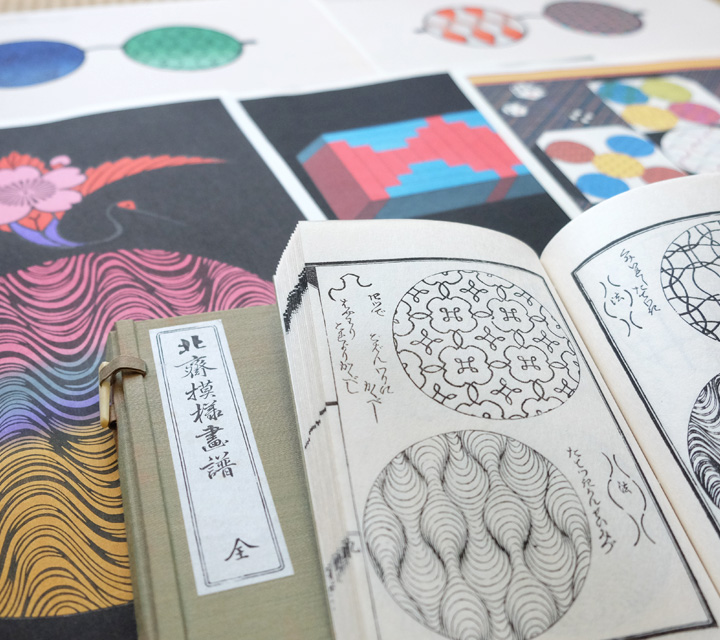
Katsushika Hokusai was a genious ukiyo-e artist who brought numerous masterpieces into the world. He also drew designs for fine-patterned dyeing, which were compiled in a book entitled "Hokusai Moyo Gafu (Hokusai Design Sketchbook)." In 1986, the woodblocks used to print "Hokusai Moyo Gafu" were discovered in storage at the Boston Museum of Fine Arts in the United States. The old woodblocks were returned to Japan and used to make new prints by artisans at the Adachi Institute of Woodcut Prints who have mastered traditional woodcut printing techniques.
When "Hokusai Moyo Gafu" was released nearly 150 years after its first publication, Hokusai's modern and ingenious designs became the focus of public attention once again and stimulated the imagination of contemporary creators.
In 1987, the Adachi Institute of Woodcut Prints invited three top Japanese designers who resonated with Hokusai's sensibilities to join in a project called "Hokusai Design Contemporary Prints from Hokusai Design Sketchbook". Katsumi Asaba, Koichi Sato and Shin Matsunaga recomposed the patterns included in "Hokusai Moyo Gafu" to create a new world of woodcut prints.
Details of Each Design
> Katsumi Asaba "Colored Glasses of Hokusai I・II"
> Koichi Sato "Dice/Yakkosan"
> Shin Matsunaga "DEEP SEA/MOON/CUBE"
> A set of 7 designs of "Hokusai Design Contemporary Prints from Hokusai Design Sketch Book"
Katsumi Asaba
Katsumi Asaba was born in Kanagawa Prefecture in 1940. After graduating from Kuwasawa Design School and working at Light Publicity, he established the Katsumi Asaba Design Studio in 1975. As art director, he produced many memorable posters and commercials, playing a leading role in the history of advertising design in Japan. Representative works include advertising campaigns for Seibu Department Stores ("Oishii Seikatsu"), the official poster for the 1998 Olympic Winter Games in Nagano and the logo of the Democratic Party of Japan. He has received many awards, including the Tokyo TDC Award, Mainichi Design Prize and Japan Academy Prize for Outstanding Achievement in Art Direction.
Colored Glasses of Hokusai Ⅰ・Ⅱ
Katsumi Asaba saw the two circles on each page of "Hokusai Moyo Gafu" as a pair of glasses. He used the RGB color model of red, green and blue (used for computer and television displays) to color the black-and-white Hokusai patterns. The title he gave to this work shows his sense of humor as well.
- Limited Edition:
- 150 (Each print)
- Image Size:
- 26.0×37.0 cm (Each print)
- Frame:
- Frame with natural finish:40.0×55.5 cm / Acrylic Frame:39.0×54.0 cm
- Weight:
- Frame with natural finish:1.6kg, Made of wood and acrylic / Acrylic Frame:1.9kg, Made of acrylic
- Technique:
- Ukiyo-e Style Woodcut Print
- Paper:
- Echizen Kizuki Hosho Washi made by Living National Treasure, Ichibei Iwano
- Publication Year:
- 1987
- Produced:
- The Adachi Institute of Woodcut Prints
- Notes:
- We will ship the order within 7 business days under normal circumstances.
Koichi Sato
Koichi Sato was born in Takasaki City, Gunma Prefecture in 1944. He completed the course in visual design at the Department of Crafts, Tokyo National University of Fine Arts and Music (now Tokyo University of the Arts). After working in the advertising department of Shiseido, he became a freelance graphic designer in 1971. He has been a recipient of the Tokyo ADC Award, the Mainichi Design Award and the Education Minister's Art Encouragement Prize for young artists. He has also won numerous awards at international poster competitions, including at the New York Museum of Modern Art (MoMA). His works are part of permanent collections at many art museums both in Japan and abroad. He passed away in May 2016.
Dice/Yakkosan
"Dice" interprets the two circles on each page of "Hokusai Moyo Gafu" as dots on the faces of dice. The bright colors and the playful idea of creating an unfolded view of a cube are like toy pictures. Meanwhile,"Yakkosan" is an experimental work that uses a traditional ukiyo-e technique called "karazuri," which creates an embossing effect. When you take a close look at the white origami form of a "yakko (samurai servant)," you will see a pattern embossed on the surface of the Japanese paper.
- Limited Edition:
- 150 (Each print)
- Image Size:
- "Dice" 35.0×25.0 cm/"Yakkosan" 35.5×25.0 cm
- Frame:
- Frame with natural finish:40.0×55.5 cm / Acrylic Frame:39.0×54.0 cm
- Weight:
- Frame with natural finish:1.6kg, Made of wood and acrylic / Acrylic Frame:1.9kg, Made of acrylic
- Technique:
- Ukiyo-e Style Woodcut Print
- Paper:
- Echizen Kizuki Hosho Washi made by Living National Treasure, Ichibei Iwano
- Publication Year:
- 1987
- Produced:
- The Adachi Institute of Woodcut Prints
- Notes:
- We will ship the order within 7 business days under normal circumstances.
Shin Matsunaga
Shin Matsunaga was born in Tokyo in 1940. He graduated from the Department of Design, Faculty of Fine Arts at Tokyo National University of Fine Arts and Music (now Tokyo University of the Arts). After working in the advertising department of Shiseido, he established the Shin Matsunaga Design Office. His major works include CI planning for Shiseido's summer campaign, Benesse Corporation, ISSEY MIYAKE and National Museum of Western Art, Tokyo. He has produced a wide range of works including drawings, scultptures and monuments, many of which have been included in permanent collections at art museums and instutions in 90 locations around the world. He is a recipient of numerous awards including the Tokyo ADC Award and Mainichi Design Prize.
DEEPSEA/MOON/CUBE
Shin Matsunaga created three-dimensional shapes from the patterns designed by Hokusai. He utilized the continuity of Hokusai's patterns to create shapes that look like modern structures floating up from a pitch-black background. Gradation and shading techniques were employed to create very sophisticated images.
- Limited Edition:
- "DEEP SEA" 150/"MOON" 150/"CUBE" 90
- Image Size:
- 25.0×36.0 cm (Each print)
- Frame:
- Frame with natural finish:40.0×55.5 cm / Acrylic Frame:39.0×54.0 cm
- Weight:
- Frame with natural finish:1.6kg, Made of wood and acrylic / Acrylic Frame:1.9kg, Made of acrylic
- Technique:
- Ukiyo-e Style Woodcut Print
- Paper:
- Echizen Kizuki Hosho Washi made by Living National Treasure, Ichibei Iwano
- Publication Year:
- 1987
- Produced:
- The Adachi Institute of Woodcut Prints
- Notes:
- We will ship the order within 7 business days under normal circumstances.
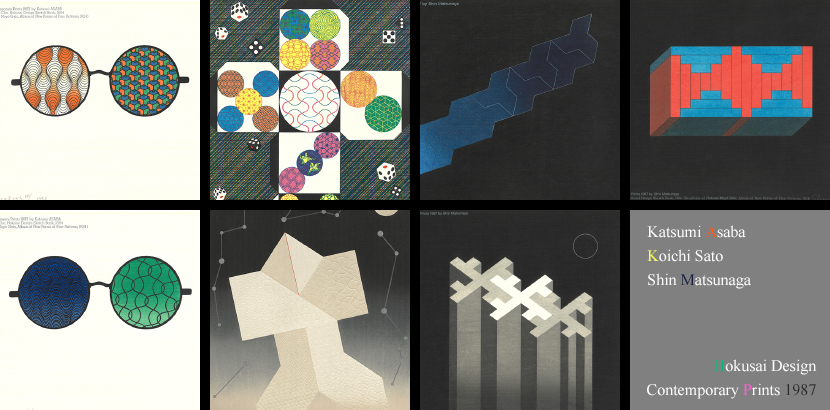
A set of 7 designs of "Hokusai Design Contemporary Prints from Hokusai Design Sketchbook"
- [Contents]
- * 7 prints with different design in the original box
- Katsumi Asaba "Colored Glasses of Hokusai I"
- Katsumi Asaba "Colored Glasses of Hokusai Ⅱ"
- Koichi Sato "Dice"
- Koichi Sato "Yakkosan"
- Shin Matsunaga "DEEP SEA"
- Shin Matsunaga "MOON"
- Shin Matsunaga "CUBE"
Price 245,000yen (excluding tax)
